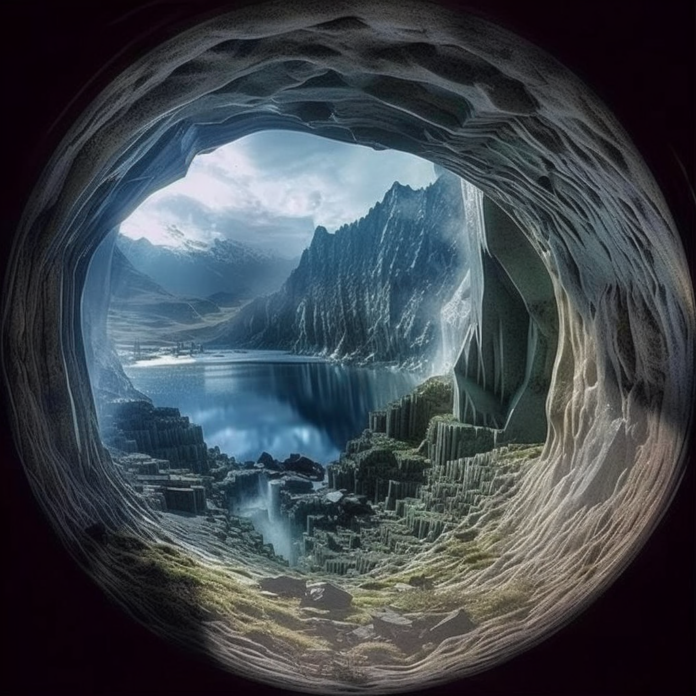
Fringe Score: Largely debunked – an imaginative concept with historical roots, but contradicted by scientific evidence.
Summary:
The Hollow Earth Theory posits that the Earth is either entirely hollow or contains substantial empty spaces within its interior. According to this theory, these hollow spaces may be inhabited by advanced civilizations, unknown creatures, or host hidden ecosystems. While the Hollow Earth Theory has historical roots and has inspired numerous fictional works, it is largely contradicted by scientific evidence and considered debunked at Fringepedia.
Origins and Development:
The idea of a hollow Earth dates back to ancient civilizations, where various mythologies and legends described underground realms inhabited by gods or mysterious beings. In the 17th and 18th centuries, the concept gained some traction among European scientists and scholars, with figures like Edmond Halley and John Cleves Symmes Jr. proposing the existence of hollow spaces within the Earth.
The Hollow Earth Theory gained renewed interest in the 20th century, with proponents suggesting that entrances to the inner Earth exist at the poles or in other remote locations. These claims often involve fantastical elements, such as the existence of a central sun within the Earth or technologically advanced subterranean civilizations.
Scientific Evidence Against Hollow Earth Theory:
Modern scientific understanding of the Earth’s composition and structure largely contradicts the Hollow Earth Theory. Key evidence against the theory includes:
- Seismic data: Earthquake studies and seismic wave analysis have provided detailed information about the Earth’s interior, revealing a solid, layered structure that includes the crust, mantle, outer core, and inner core.
- Gravitational force: The Earth’s gravitational force, as explained by the laws of physics, is consistent with a solid, dense planet rather than a hollow one.
- Magnetic field: The Earth’s magnetic field, generated by the motion of molten metal in the outer core, is incompatible with a hollow interior.
- Space exploration: Satellite imagery and polar expeditions have found no evidence of entrances to the Earth’s interior, as suggested by Hollow Earth proponents.
Conclusion:
While the Hollow Earth Theory is an intriguing and imaginative concept, it is largely debunked by modern scientific understanding and evidence. At Fringepedia, we acknowledge the historical and cultural significance of the theory, but recognize that it is contradicted by contemporary knowledge of the Earth’s structure and composition.






